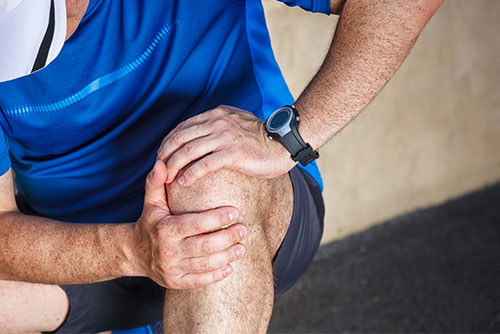
Do you have knee pain? If so, you are not alone. Nearly 100 million Americans live with chronic knee pain. Knee pain affects people of all ages and can be caused by various medical conditions or injuries. Depending on the case, knee pain may limit motion, affect control, diminish strength, and hinder mobility.
What Are the Symptoms of Knee Pain?
The cause of the issue may vary where the pain is coming from and how badly it hurts. The most common symptoms are:
- Constant ache
- Difficulty holding weight or walking
- Swelling and stiffness
- Redness and warmth
- Unable to extend the knee
What Are the Causes Knee Pain?
Like we mentioned earlier, knee pain can result from several medical conditions or injuries. Here are the most common causes:
- Injuries and Mechanical Problems
- Ligament Injuries – An ACL (anterior cruciate ligament) injury is the most common ligament injury. This ligament keeps the shinbone in place and can be torn when changing directions too fast or suddenly coming to a stop. These types of injuries typically happen in sport-related activities, such as football, soccer, and basketball.
- Fractures – Fractures can happen when there is direct trauma to the knee and causes at least one of the bones to break. Knee fractures are commonly seen on patients who have been in a car accident or who have fallen.
- Meniscus Injuries – The meniscus is the cartilage between your shinbone and thighbone. This cartilage acts as a shock absorber and can be torn with a sudden twist of a weight-bearing knee.
- Dislocation – A knee dislocation is when the front of your knee slips out of place, usually to the outside of your knee. Once again, this can happen with direct trauma such as a car accident, a fall, or sports.
- Bursitis – Bursae are small sacs of fluid that cushions the knee joint, and they allow the tendons to gently slide over the joint. These sacs can become inflamed when the knee is overused or under pressure for a long time.
- Tendinitis – Tendinitis is irritation and inflammation of the tendon that connects the kneecap and shinbone. This injury is typically found among jumpers, but any athlete can develop tendinitis.
- Loose Body – Loose bodies are small pieces of cartilage or bone that float in the joint fluid. This generally happens with wear and tear that comes with age, but it can happen with sports injuries as well. Once the loose body becomes unstable and moves within the fluid, it can interfere with knee movement.
- Illiotibial Band Syndrome – Illiotibial band syndrome occurs when the outside band between the hip becomes tight and starts to rub the femur. This problem is commonly seen in long-distance runners and cyclists.
- Arthritis
- Osteoarthritis – Osteoarthritis is when the cartilage that cushions the bones of the knee wear down due to age and use. Once worn down, the bones then rub against one another causing knee pain and stiffness.
- Rheumatoid Arthritis – Rheumatoid arthritis is a chronic inflammatory disorder. This can mistakenly attack your own body’s tissues. As a result, the inflammation thickens the synovium membrane and diminishes the cartilage and bone.
- Post-Traumatic Arthritis – Post-traumatic arthritis can happen following a serious knee injury. Fractures of the bones or tears of the ligaments may cause damage to the articular cartilage over time. This can cause knee pain and limited knee function.
Closing Thoughts
If you are experiencing knee pain and would like to explore your options on how to treat it, please give Prairie Orthopaedic & Plastic Surgery, PC a call to schedule a consultation. Dr. Patrick Hurlbut and Dr. Matthew Byington are Lincoln’s top choices for the treatment of knee injuries and conditions. As a patient, you will receive quality care and be properly educated on all your treatment options. You can reach us at or www.prairie-ortho.com.

